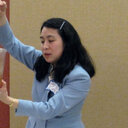The relationship between an endangered North American tree and an endophytic fungus.
מילות מפתח
תַקצִיר
BACKGROUND
The Florida torreya (Torreya taxifolia) began a catastrophic decline in the late 1950s and is now the rarest tree in North America for which a full species designation has been established. The trees have common plant disease symptoms, but the reason for the decline has never been identified. T. taxifolia's imminent extinction gains special poignancy through its close relationship to the Pacific yew (Taxus brevifolia), which produces the potent anticancer agent, taxol.
RESULTS
An examination of the endophytic fungal communities of wild torreyas consistently found a filamentous fungus, Pestalotiopsis microspora, associated with diseased trees and also with most symptomless trees. P. microspora can be cultured in the laboratory, and when it is introduced into greenhouse-grown torreyas, it causes disease symptoms similar to those seen in the field. The fungus can then be reisolated from these deliberately infected trees. The phytotoxins pestalopyrone, hydroxypestalopyrone and pestaloside have been isolated and characterized from axenic fungal cultures, and both pestalopyrone and hydroxypestalopyrone can be isolated from artificially infected torreyas. In addition, pestaloside has antifungal activity against other fungal endophytes of T. taxifolia.
CONCLUSIONS
The filamentous fungus, P. microspora, has an endophytic-pathologic relationship with T. taxifolia. The fungus resides in the inner bark of symptomless trees, and physiological or environmental factors could trigger its pathological activity. P. microspora produces the phytotoxins pestalopyrone, hydroxypestalopyrone, and pestaloside which give rise to the disease. Pestaloside, which also has antifungal activity, could reduce competition from other fungal endophytes within the host.



